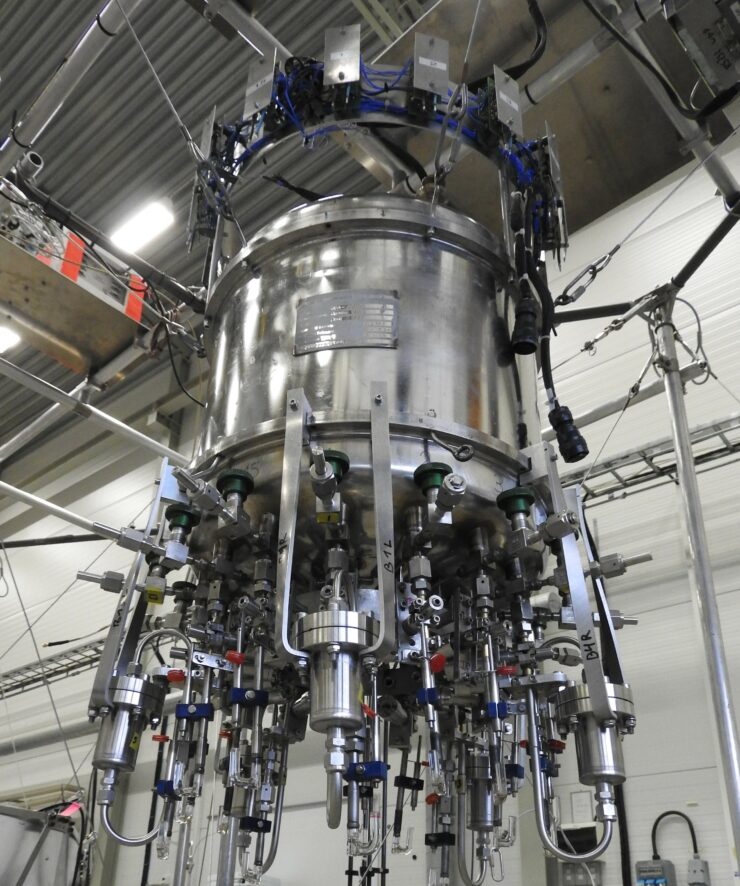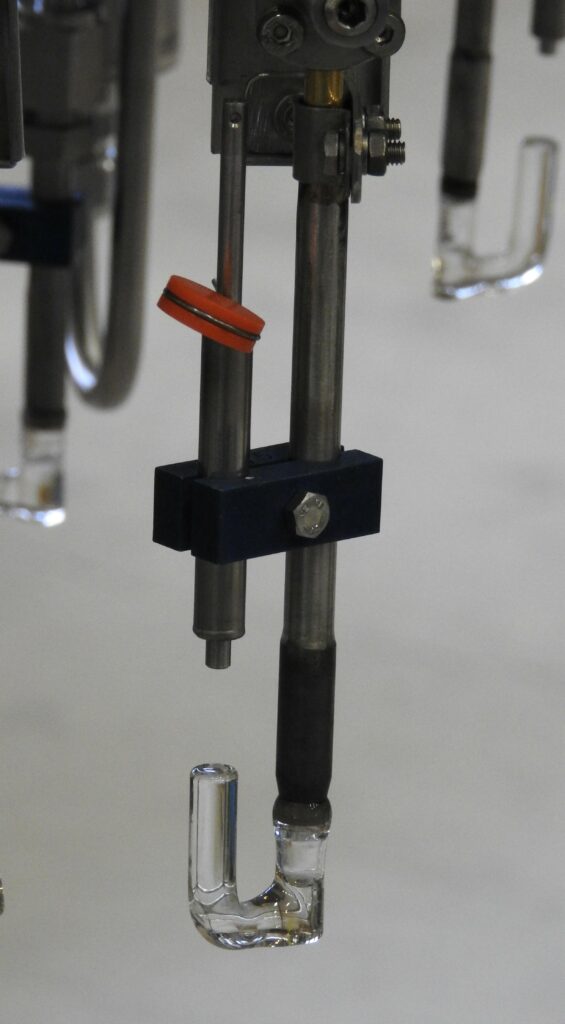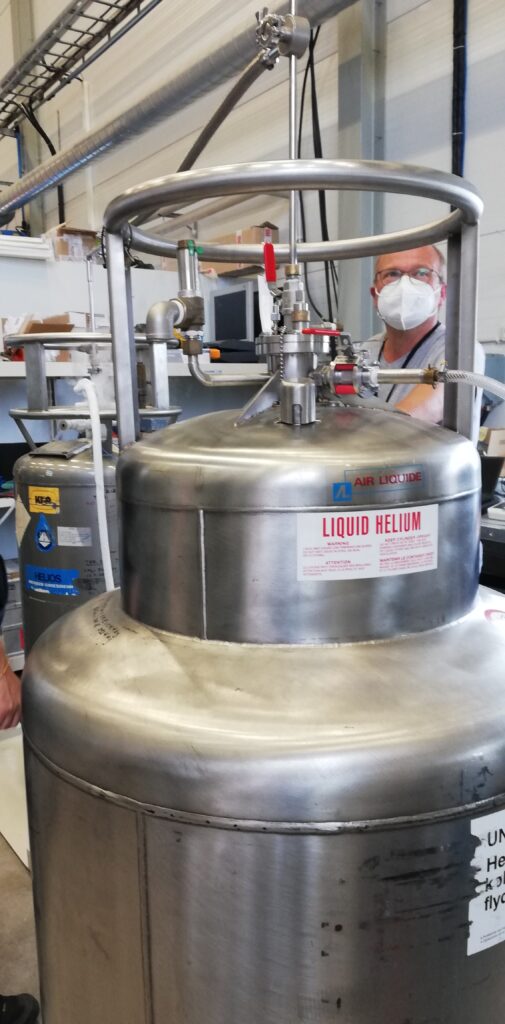Blog
11-Aug-2021: Cryo-sampler and liquid neon
Today’s post is about one of my favorite pieces of equipment: the cryo-sampler. This is the device that will collect large stratospheric air samples from different altitudes, to be analyzed by all the participating labs for many gases and isotopes.
The device is quite complicated, as you can see in the photos. But the principle is relatively simple: Inside, there are 15 sample bottles immersed in cryogenic liquid. When they are opened, these draw and freeze air from outside – and this is how large amounts of air can be collected (this is essentially a cryo-pump). When the balloon reaches a pre-defined altitude, the inlet to one bottle is opened by a small hammer breaking a glass part (you can see these glass parts in the picture below).
When enough air has been collected, a small explosion closes a golden tube, sealing the sample bottle. As the balloon descends, the corresponding bottles are filled one after another.

The cryo-sampler hanging in the TWIN gondola frame. On top are the electronics; in the lower part are the air inlets. The middle part is filled with LNe.

Ingenious opening mechanism of the sampling volume: the hammer held by the red piece is released, breaking the glass below and opening the inlet.
This cryo-sampler belongs to Andreas Engel (Uni Frankfurt); it has a long history and has been in many sampling campaigns; this is its first fly in the last 10 years. We made some small changes to add ozone scrubbers, in order to be able to measure COS isotopes. Otherwise, it is in good shape, already installed in the gondola and ready to go.
More info: https://www.goethe-university-frankfurt.de/65563148/Cryogenic_Air_Sampler
Liquid Neon

Andreas Engel watching the LNe production. You see the liquid helium tank in foreground, and the vessel for LNe is visible in the background left.
Liquid Ne is cool – literally. At a temperature of 27 K (or −248.59 °C), it is cold enough to freeze most air components and it has a much higher refrigerating capacity than liquid He. That’s why we use liquid neon (LNe) in the cryo-sampler.
But we cannot get LNe commercially – apparently there is no market because there are not enough users – so we had to produce it ourselves on-site. Andreas has an installation to do this, using Ne gas cylinders and liquid He, which has a temperature of 4 K. This is essentially a temperature exchange operation, but it is not trivial: with such low temperatures in a closed system, one needs to know very well what they do.
Andreas made the LNe on Monday – he transformed 3 high-pressure Ne gas cylinders (total 30 000 L Ne gas) into about 15 L of liquid Ne for the cryo-sampler.
Now we need to fly soon.

